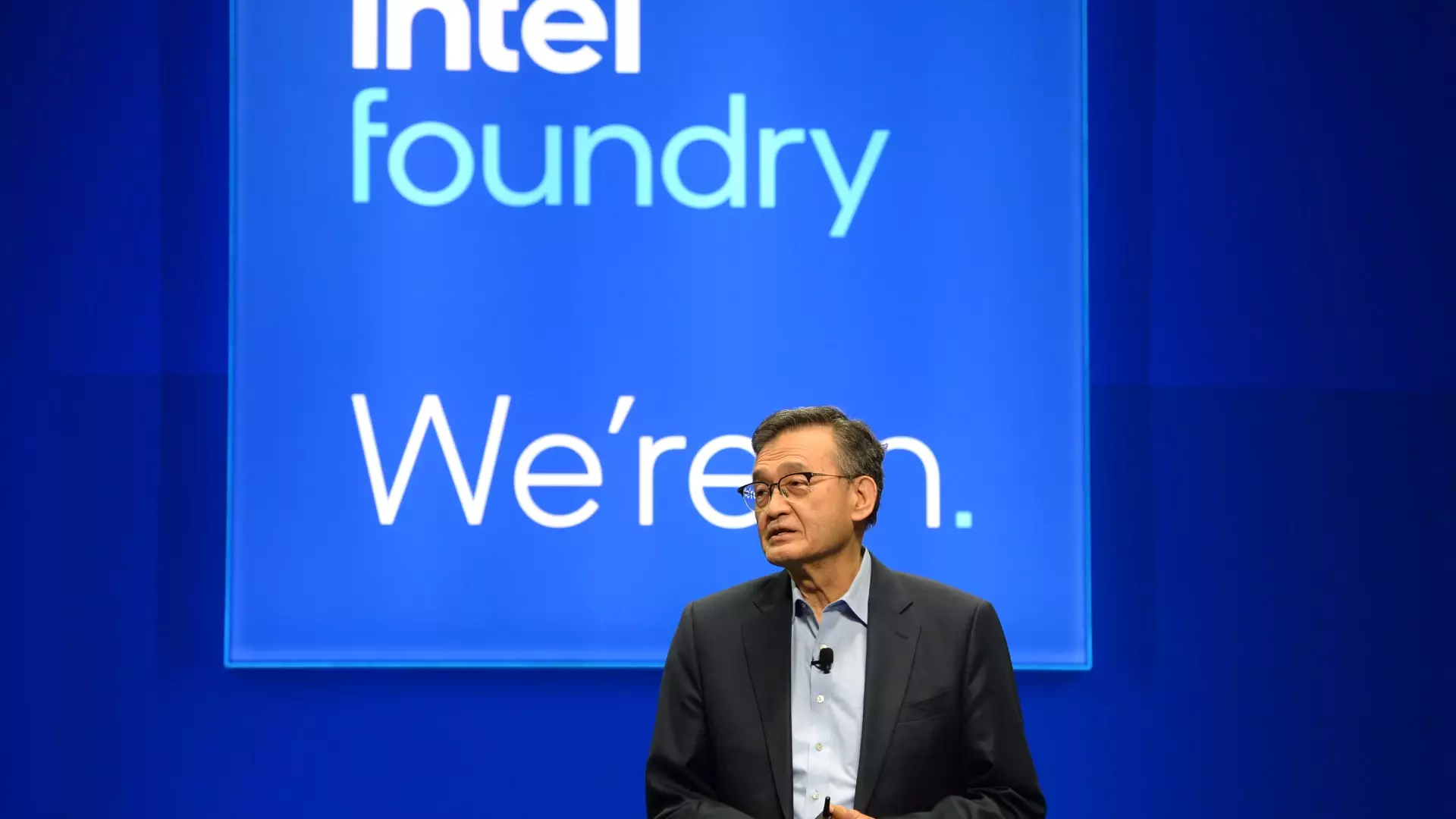Intel’s latest financial results provide a paradoxical snapshot: on one hand, the company posted better-than-expected earnings and revenues; on the other, its shares plummeted by more than 8%, revealing investor skepticism about its long-term prospects. This contradiction underscores a fundamental disconnect between short-term profitability and strategic viability. Intel’s recent quarter demonstrates neither robust growth nor a sustainable business model but rather a fragile veneer of financial stability camouflaging deeper operational missteps. Relying on a fleeting burst of earnings to mask underlying structural issues is a perilous strategy—especially when the broader industry is rapidly evolving.
In a landscape dominated by innovation giants like NVIDIA and emerging foundries in Asia, Intel’s attempts at staying afloat with outdated paradigms are increasingly ineffective. The company’s decision to slash foundry investments, though perhaps necessary from a cost-cutting perspective, signals a retreat from aggressive technological leadership at precisely the wrong moment. Shrinking its manufacturing footprint and pivoting away from external foundry pursuits may appease immediate financial concerns but threaten Intel’s relevance in a technology sector craving innovation and external partnerships. This myopic focus on short-term cost reduction risks sacrificing its long-term competitiveness.
Decapitated Ambitions and a Faltering Foundry Strategy
Central to Intel’s recent turmoil is its waning confidence in its foundry business—a segment that once held the promise of transforming the company into a key player outside its traditional chip manufacturing. The company’s disclosure that it might “pause or discontinue” this initiative altogether exposes an alarming reality: Intel’s inability to secure external customers. For a business model rooted in manufacturing for third parties, this lack of external demand is catastrophic. If Intel cannot attract customers to adopt its next-generation nodes like 14A, its future as a leader in chip fabrication becomes increasingly uncertain and dependent on internal demand alone—a scenario rife with risks of underutilization and stranded assets.
CEO Lip-Bu Tan’s commentary underscores this fragility, emphasizing that plans for the 14A process hinge on confirmed customer commitments. His insistence on “no more blank checks” reflects a cautious, risk-averse approach that, while fiscally prudent, may be too conservative given the rapid pace of technological change. Moreover, the company’s decision to curtail investments in Germany and Poland and to slow production at its Ohio plant reveals a retreat rather than a strategic repositioning. These actions communicate a troubling message: Intel is scaling back its ambitions rather than fostering innovative growth. Investors rightly question whether the company’s once-lofty goals are now just casualties of poor execution and a declining market share, especially among AI and data center customers.
The Political and Economic Cost of Strategic Missteps
Intel’s deteriorating situation extends beyond financial metrics; it embodies a failure to capitalize on global economic shifts and technological trends. While China’s restrictions and geopolitical tensions continue to complicate supply chains, Intel’s half-hearted efforts in expanding domestic manufacturing and external collaborations suggest a leadership incapable of adapting swiftly. Instead of seizing opportunities to partner with U.S. government initiatives or revitalize its manufacturing ecosystem through innovation-driven investments, Intel appears to be caught in a cycle of complacency and internal misjudgment.
This destructive cycle is exacerbated by its massive workforce reduction—eliminating 15% of its employees and leaving a barren footprint of underutilized factories. Such drastic cuts are often a symptom of desperation rather than strategic clarity. It signals an acknowledgment of failure but lacks a compelling vision for what comes next. The almost $3 billion net loss and impairments reflect not only financial wounds but also a loss of confidence—both internally among employees and externally among shareholders.
Ongoing market share erosion, particularly in artificial intelligence, highlights Intel’s inability to adapt to the shifting competitive landscape. While JPMorgan’s analysts call its foundry retreat a “positive step,” this lukewarm endorsement ignores the broader truth: without a clear and differentiated plan to regain technological leadership, Intel risks being sidelined in an industry increasingly dominated by specialized players with proven innovation capacity. In this environment, modest cost-cutting efforts and micro-adjustments are insufficient. What is desperately needed is a bold, forward-looking strategy rooted in technological reinvention and strategic partnerships—an arena where Intel, regrettably, continues to falter.

